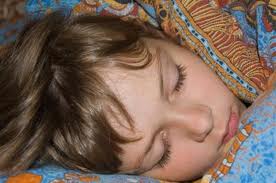From the recent warn that the cases of children suffering from MRSA, or methicillin-resistant Staphylococcus aureus leading to many deaths are estimated to increase, this article hope to give an overview of MRSA infection: symptoms and treatment.
What is MRSA?
In general, MRSA is a type of Staphylococcus aureus (S. aureus) bacteria that has become resistant to many antibiotics that are similar to penicillin.
If kids are infected with MRSA at the same time having flu, they were significantly more likely to die, study finds.
What are symptoms of MRSA?
Methicillin-resistant Staphylococcus aureus (MRSA) affect the children skin that can become so serious and sometimes deadly without right treatments. Therefore, it is necessary to realize its symptoms at the early period.
The MRSA-infected children skin can be seen a localized collection of abscesses, boils or furuncles that are filled with pus. The affected region may turn red and swollen and be intensely painful, and drainage of the area may occur. At the early MRSA stage, children may have headache, a general sick feeling, muscle aches, shortness of breath, fatigue, fever, shivering and chest pain of mild to medium intensity. If the case is worse, the symptoms would show more severe.
How is MRSA treated?
When MRSA diagnosed, the common treatment is antibiotics. If the patient has an isolated skin boil caused by MRSA, a medical professional can make an incision in the boil and drain it on an outpatient basis.
Later on, patients will need hospital treatment or surgery in case of more serious symptoms.
Medical care for severe MRSA infections usually requires hospitalization. Patients with MRSA infections will probably placed in room with other MRSA infection patients or in a separate isolation room to minimize the possibility of spreading the infection to other patients.
What should we do to prevent flu and MRSA infection risk?
Preventive care is key to avoiding flu in general and MRSA in particular.
The first tip is hand washing. Always stock up on soap and antibacterial cleansers and have them ready by every sink in your house.
Starting off healthy can help you be strong against invading viruses. Provide more vitamins and nutrient supplements in your diet as possible.
Ensure that you get flu shot by period of every 6 month.
The MRSA-infected children skin can be seen a localized collection of abscesses, boils or furuncles that are filled with pus. The affected region may turn red and swollen and be intensely painful, and drainage of the area may occur. At the early MRSA stage, children may have headache, a general sick feeling, muscle aches, shortness of breath, fatigue, fever, shivering and chest pain of mild to medium intensity. If the case is worse, the symptoms would show more severe.
How is MRSA treated?
When MRSA diagnosed, the common treatment is antibiotics. If the patient has an isolated skin boil caused by MRSA, a medical professional can make an incision in the boil and drain it on an outpatient basis.
Later on, patients will need hospital treatment or surgery in case of more serious symptoms.
Medical care for severe MRSA infections usually requires hospitalization. Patients with MRSA infections will probably placed in room with other MRSA infection patients or in a separate isolation room to minimize the possibility of spreading the infection to other patients.
What should we do to prevent flu and MRSA infection risk?
Preventive care is key to avoiding flu in general and MRSA in particular.
The first tip is hand washing. Always stock up on soap and antibacterial cleansers and have them ready by every sink in your house.
Starting off healthy can help you be strong against invading viruses. Provide more vitamins and nutrient supplements in your diet as possible.
Ensure that you get flu shot by period of every 6 month.

